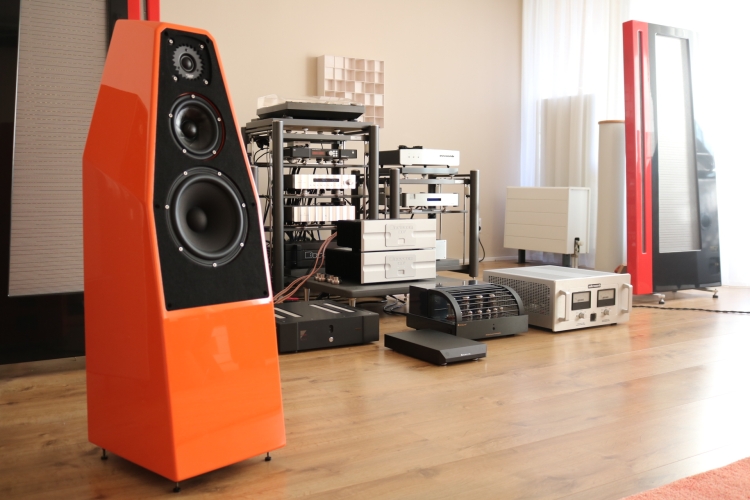
Shapely and compact, the latest Wilsons are a visual treat
Review sample supplied by Reference Sounds
Retail price in the Netherlands: 22.490 euro
They are quite the lookers in that bright orange, aren’t they? From the moment that I first saw the Sabrinas at the X-fi audio show in Veldhoven in the Reference Sounds room, I was in love. They strike just the right balance between organic curviness and technical precision. I think I prefer them in the gold-like (Titanium-Brown?) color, but the orange really is quite striking too. An opinion divider one might think, but everyone who visited my room commented very positively on their appearance.
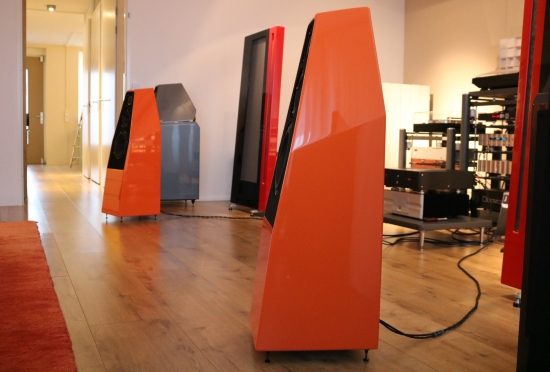
Between having requested review samples and their arrival I found myself in the lucky position to find a pair of used Watt/Puppy 8 in mint condition. The WP8 is by now an older speaker, but it should still provide a good backdrop against which to assess the Sabrina.
The speakers will be listened to using a Jeff Rowland Corus + PSU preamp, a Bricasti M1 DAC, Artesania racks, Transparent interlinks and speaker cables from Jorma Design and Transparent. Initial listening is done with my own Transparent Ultra XL XLR interlinks and Jorma Design no.3 speaker cable.
Crossover Design
In my experience, Wilsons have always been superbly coherent and here again, this is the case. When meeting Peter mcGrath during his visit to Michaels Reference Sounds, he told me that the company pays the same fanatical attention to detail for all Wilson speakers, including the Sabrina. Although corners have been cut in order to make the Sabrina attainable for a wider audience, these corners have apparently only been cut in the places where they do the least damage. Importantly, Peter told me that the approach to crossover design is the same for the Sabrina as it is for example for the 80k Alexia that was demoed at that time. This means that for the Sabrina’s crossover, too, only the best carefully selected components were used, they are point to point soldered with specially selected solder, using specially selected wiring made by Transparent Audio. The finished crossover is then placed inside a container that is filled with resin to shield it from vibrations. It seems that this fanatical attention to crossover design has really paid off for the Sabrina, as once again I can’t hear any transitions between the drivers: they are blended entirely seamlessly. This absolutely does not go without saying. Coming from over a decade of using various full-range ribbon speakers, I am quite sensitive to phase deviations between drivers. Walking around from room to room at audio shows frequently I hear issues in this department, but never with Wilson speakers: not the Watt/Puppies, not the Alexias, and not the Sabrinas.
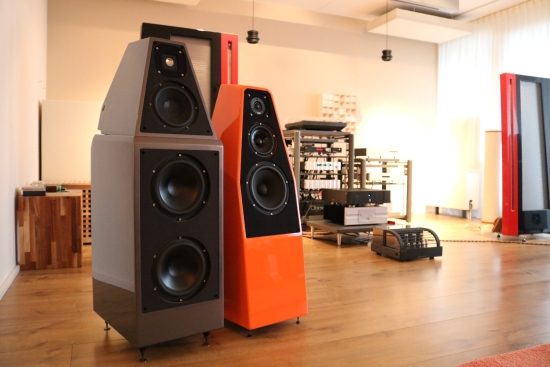
Above and below, while the Watt/Puppies don’t appear to be a whole lot taller, they definitely have a lot more bulk than the slender Sabrinas, which is especially obvious when viewed sideways.
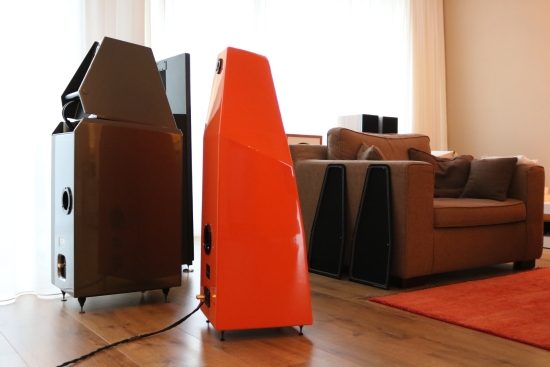
Bryston 4B and 3B Cubed
Starting off with the Bryston 4B Cubed (SST3), the Sabrinas definitely sound fuller and more sonorous than one would expect them to given their size. The midrange is rich and warm, but well-detailed and with excellent impulse speed, meaning that sounds are smooth yet very quick. Further up the treble is grain-free and open without sounding in any way etched or overly bright.
Initially, the bass was not quite as nimble or as articulate as I like it to be, but the main culprit was quickly identified as the spike bases. Normally hard-coupled to the floor, Michael had attached felt to them to enable easy positioning while avoiding damage to floors during demos. Substituting these for hard coupled variants, and tightening the nuts provided a huge improvement, and re-integrated the bass entirely.
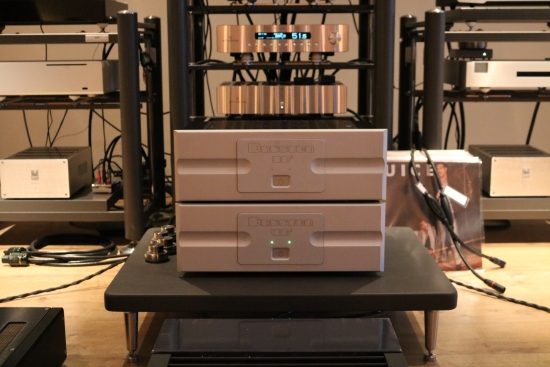
My room has two room modes that combine into a peak and a null quite close to each other. I’ve remedied this with speaker placement and bass traps as much as possible, but depending on speaker design, some low notes are still louder than others due to this. Closed cabinet speakers tend not to excite the room so much while ported designs can be more difficult to get right. The Watt/Puppies indeed excite this room mode but with careful placement, I’ve reigned this in, to the point where if not perfect it is certainly good enough. The Sabrinas excite the same frequency, but less so. Moreover, repositioning them slightly closer to the listening position (30 cm to be exact) made all the difference in the world. Place the WP8 too close and they become a little too clean, but with the Sabrinas this results in them having an even bass response while still sounding smooth and warm.
Percussive sounds are most impressive, hanging in free space anywhere in the room, be it between or outside of the speakers. Transient speed really is excellent but completely without the hard or analytic quality that often comes along with this.
I listened to the smaller Bryston 3B Cubed as well and it drives the Sabrinas every bit as well as its bigger brother. Although the 3B does not have all of the 4B’s bass fullness and overall richness, its purer and more open midrange matches very well with the Sabrinas’ inherently rich sound.
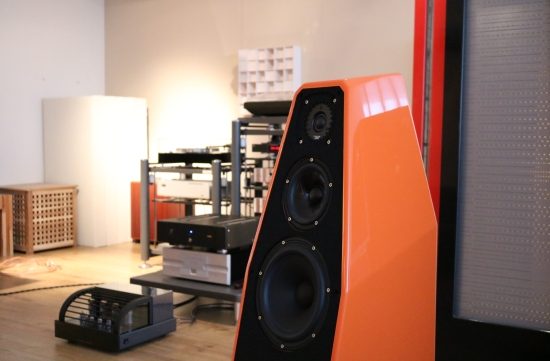
Ayre VX-5 Twenty
Switching from the Bryston 4B Cubed to the Ayre VX-5 Twenty while retaining all cables, it is clear that both amps cater to different tastes, but both really have their merits. Compared to the Bryston, the Ayre more emphasizes transparency, precision, and resolution, over the (bass-) fullness and overall solidity of the Bryston. The Bryston is more sonorous and earthy and the Ayre is more light-footed and ethereal. With the Ayre driving the Sabrinas it is even easier to hear how well they manage to combine smoothness and resolution in equal measure. Bass is less voluptuous than with the Bryston for sure but that is expected, as Brystons are after all known to be bass monsters. The vocal range with the Ayre is fluid and more expressive but also less harmonically rich. This balance is nicely restored however by substituting the Jormas with the current edition Generation 5 Transparent Super speaker cables, nicely filling up the bass and lower midrange without reducing PRAT and further widening the soundstage in the process. Treble does become slightly darker but that is an aspect that as a Ribbon enthusiast I am probably more sensitive to than people more used to speakers with dynamic drivers.
The Ayre is the perfect amp for listening to delicate music. It captures absolutely all the subtle nuances that are in a recording, which can be fascinating. For really rocking out however it may not be the best solution. Don’t assume that the Ayre lacks slam in any way though – bass is fast and plenty punchy!
The Sabrina’s bass, by the way, might go less deep and ultimately have less power than that of the Watt/Puppy 8, for my purposes the Sabrinas still go way louder than I need them to, and bass is even a little better behaved in this room, sounding more even-handed than the WP8 when faced with my room modes. While not an absolute quality of the Sabrina, nor a defect in the WP8, this is an aspect that is helpful in creating a seamless bass even in more difficult rooms.
The Sabrinas have compact dimensions and although this results in them sounding a little smaller and dynamically more contained than the company’s larger models, still their soundstage easily expands beyond the speaker enclosures, and the sound can really fill the entire room. Most importantly, the speakers perform the disappearing act perfectly. Sounds appear to be anywhere in the room but straight from the cabinets.
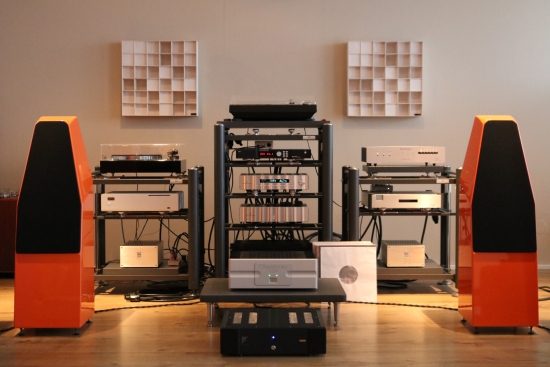
Above: the Sabrinas are posing for this photo only – naturally, the speakers were not listened to set up this close to each other.
Tonality
It’s written in many other reviews how all the usual Wilson traits are still present in the Sabrina with the only detractive aspects being that they go less loud and go less deep. While I mostly agree with this assessment, there is an aspect which I have not seen mentioned elsewhere. I am talking about timbre and tonal neutrality. Normally these aspects are a Wilson forté, but a little less so with the Sabrinas.
As mentioned I have only recently switched from full range ribbons to dynamic speakers, currently the Watt/Puppy 8. If I went straight from the Apogees to the Sabrinas then this aspect might not have stood out so clearly and I may have attributed this to cabinet speakers in general and, but now that I hear it in comparison with the WP8, I cannot un-hear it.
With the Sabrinas there’s a seductively rich glow in the midrange that is certainly pleasant and likely very welcome for many people and especially when partnered with less refined equipment, but alongside with this warmth, there is also a colouration in the midrange as well as a certain thickness that seems to be induced by the cabinet, which combines to give the sound a slightly processed quality. I mainly suspect the cabinet because this is one of the few places where costs have been cut, and this is further substantiated by a knuckle test. The latter is absolutely no scientific method and a hollow-sounding cabinet can sound perfectly great, but it is an indication when comparing the Watt Puppy cabinet with the Sabrina’s. Again, having lived with planar magnetostatics for over a decade I am probably more sensitive to this aspect than the average person, but I also do not hear this with the Watt/Puppy 8. If anything, this makes a case for taking the extra expense of fully making the speaker enclosures from Wilson’s famous X and M material, which is where the dearer models in the range come in. As Michael suggested, this might also have something to do with the design and size of the midrange driver itself, and this certainly seems plausible.
But to further put this into perspective, the X and M material is proprietary and very costly to make. If the Sabrinas’ enclosures were made like this then they could not have been offered at this price. Therefore I understand the decision to build the Sabrina’s cabinet using a combination of their famous X-material and a non-disclosed other material. As always, it’s a matter of performance vs cost. It’s the logical consequence of creating a Wilson speaker at a lower price than usual.
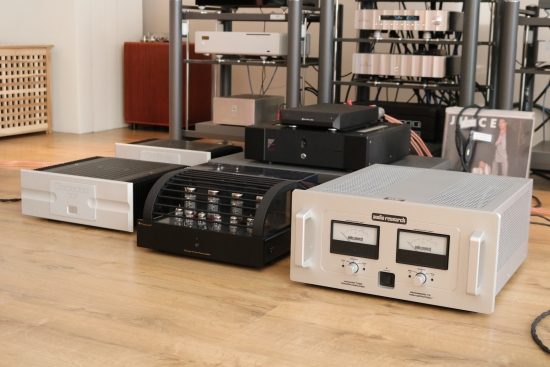
Audio Research Reference 75 SE
The Ref 75 SE is still available yet already a classic, something that does not happen often. It does not really sound like a stereotypical tube amp in that it does not do the fat bass / super-rich midrange kind of thing, the PrimaLuna is more like that. Rather, the 75-watt Reference 75 SE offers supreme resolution and transparency and has a very pure, delicate and very finely balanced sound, not unlike the Ayre in those aspects. It’s not as full-bodied as the Bryston, nor as lively and dynamic as the NuPrime, but still works miracles with some speakers, and the Sabrinas are no exception. Interestingly with this tube amp not only did I hear incredible low-level resolution, but the Sabrinas’ naturalness in tonality also stepped up several notches compared to either of the transistor amps, to the point that I could not clearly discern the aforementioned processed quality anymore. While the amp appeared to have enough power to drive the Sabrinas loudly with excellent clarity and without any distortion ultimately it just seems to be slightly too polite to really bring them to life as much as I would like.
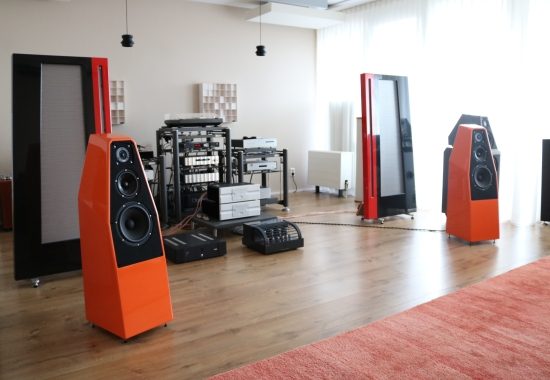
PrimaLuna DiaLogue Premium
Although I’d been warned by another dealer that the Sabrinas demand more juice than their efficient spec would suggest, against better judgment I also tried a PrimaLuna DiaLogue Premium tube power amp with them. Even in UltraLinear mode this amp only provides only 36 watts with its stock EL34 tubes. Expecting a mushy sound I was overwhelmed to find that not only was the bass tight and powerful, but the timbre had also improved even further!
Everyone knows that tubes have their special way with voices and midrange in general and I have my fair share of experience in this field too, but I really did not expect this. Apparently, this is one of those rare occasions where a magical match is made. After 20 minutes of playing time (the amp was brand new) involvement was raised to the point where it became hard to walk away. In spite of the low absolute power, the sound was incredibly captivating and dynamics were now seemingly more expansive than with either of the big transistor amps as well as the Ref 75. I couldn’t suppress a smile while I cued some vicious Madonna tracks while cranking up the volume. Smooth as smooth can be but boy now the Sabrinas sure rocked! So is this supposed power hungry aspect nonsense? Well, yes and no. If you play truly dynamic music such as classical pieces very loudly, the peaks could come out more compressed than with the Ayre and the Bryston. During my normal listening sessions playing (much more compressed-) soul, funk, jazz and electronic I did not become aware of any limitations of power unless really pushing it to levels where the neighbors might come knocking on my door. I can imagine that a super amp such as a Soulution 511 or even 711 might extract the maximum dynamic performance from the Sabrinas but this is speculation.
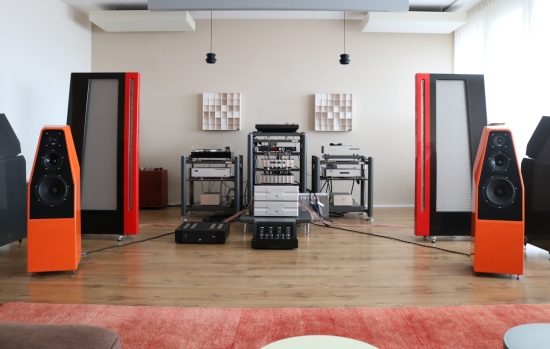
Perspective
In my view, it’s mostly tonality and overall clarity where the dearer models up in Wilson range offer more, and in lesser amounts in terms of dynamics and bass quality. The Sabrinas always sound coherent but they like to play a little louder to really come alive. A big strength is that even when playing very loudly they sound utterly balanced and smooth. It’s also important to add that while I find the Sabrinas to sound comparatively less pure than the companies’ dearer efforts, this does not detract from the fact that they do sound very natural, especially when driven with the PrimaLuna, but with any amp that I tried, they are always very easy to listen to. They don’t punish one for playing a less than stellar record. In fact, they are very far removed from the cold and analytical sound that I hear in many rooms at audio shows, even from systems costing multiples, yet the Sabrinas offer fabulous resolution and precision.
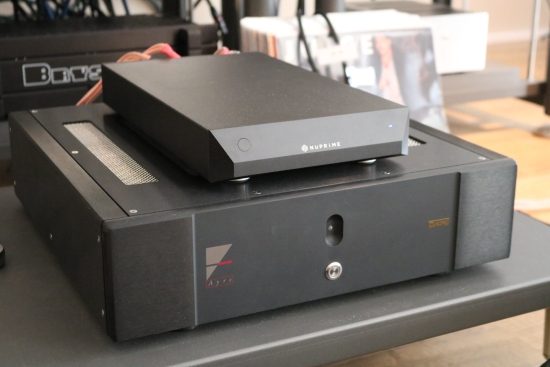
NuPrime ST-10
The NuPrime, by comparison, is a truly tiny amp. And being extremely affordable, if I did not know better then it would be easy to assume that it would be underqualified for any Wilson. The truth could not be more different: the ST-10 really brings the Sabrinas to life! Where all other transistor amps seemed dynamically a little restrained and only the PrimaLuna provided the kind of subjective dynamic swing that I crave, the NuPrime ST-10 has a kind of energetic presence that none of the other amps (transistor and tube) could match. Transient crispness and dynamic impact are really startling, better than with any of the other amps. Bass with the ST-10 is also incredible, not in a big and fat kind of way, but tuneful and articulate with just the right amount of pressure. Meanwhile, the NuPrime’s very pure tonality and open and communicative character further increase the Sabrina’s timbral believability. The ST-10, however, is not the most refined amp in terms of treble delicacy and resolution of fine detail. For the most part, this is fine, as emotion is not usually triggered by such technical aspects, and setting aside these matters, the ST-10 really works incredibly well with these speakers.
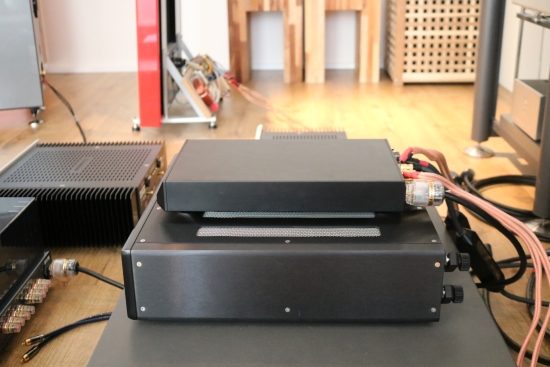
But if you’re spending Sabrina money and want all the boxes ticked then there are better options, perhaps even in the NuPrime range. The Ayre, in any event, makes a very good case for itself precisely in those areas where I feel that the NuPrime can do better while retaining a big chunk of the latter’s overall pure and clean character. The ideal for me would be an amp with Ayre treble, PrimaLuna midrange, and NuPrime bass. Ah those pesky audiophiles: they’re just never satisfied, are they? In all seriousness, I don’t think I have heard the perfectly ideal amp with these speakers just yet but I do think that I have tried enough of them to have a good sense of the Sabrinas’ performance.
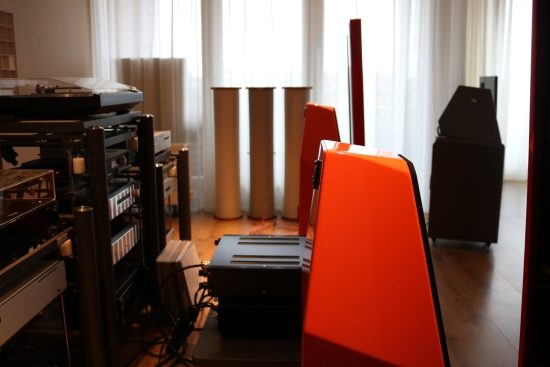
And then again, just like there is no such thing as a perfect being, there is no such thing as the perfect audio component. It is always about identifying what you find most important in sound, then to maximize those qualities while excusing some others.
Spikes and Tweaking Tilt
Just a small note on the importance of precise spike adjustment and the effect of tilting. Tilting the speakers more backward produces more emphasis on the midrange and less so on the treble while tilting the speakers more forwards makes for a clearer treble but a less pronounced midrange. As listening distance and sitting height can vary greatly it is best to just experiment with this to find the best setting. The best starting point is with all spikes screwed in equal amounts, and don’t forget to tighten the nuts between adjustments, otherwise, the bass is not as articulate as it can be.
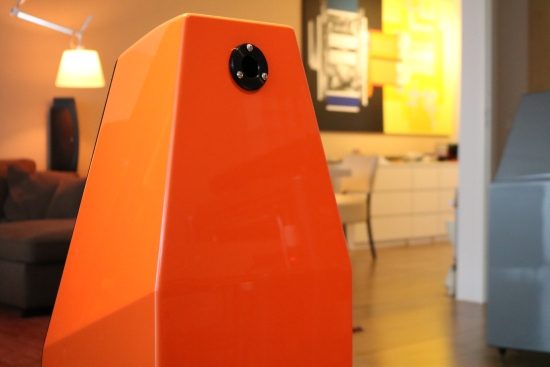
Conclusion
Being the company’s most affordable speaker they still demand serious money, but with the Sabrinas, Wilson Audio has created a speaker that is available to a larger audience than before. Yes, the dearer models sound larger, more expressive and timbrally more convincing, but as always, increases in quality come at a price. The next speaker in line is the Yvette, which sounded very good when I heard it at the X-fi show in Veldhoven. If budget stretches then this speaker should definitely be auditioned. For anyone else, the Sabrina may well provide the perfect introduction to the brand. Their strengths include coherence, temporal precision, dynamic realism and excellent bass given the small enclosure. Along with the attractive new form factor comes a smoothness and richness of sound not present in earlier generations. No matter which amp is used, the overall impression is always that of a smooth, generous and stress-free transducer. Finally, while I personally like the technical look of the older Wilsons as well as the more upscale current Wilsons, I imagine that the compact and subtly shapely Sabrina would easily pass the beauty committee where other Wilsons might not.
External Links
Manufacturer: Wilson Audio
Distributor for the Netherlands: Reference Sounds
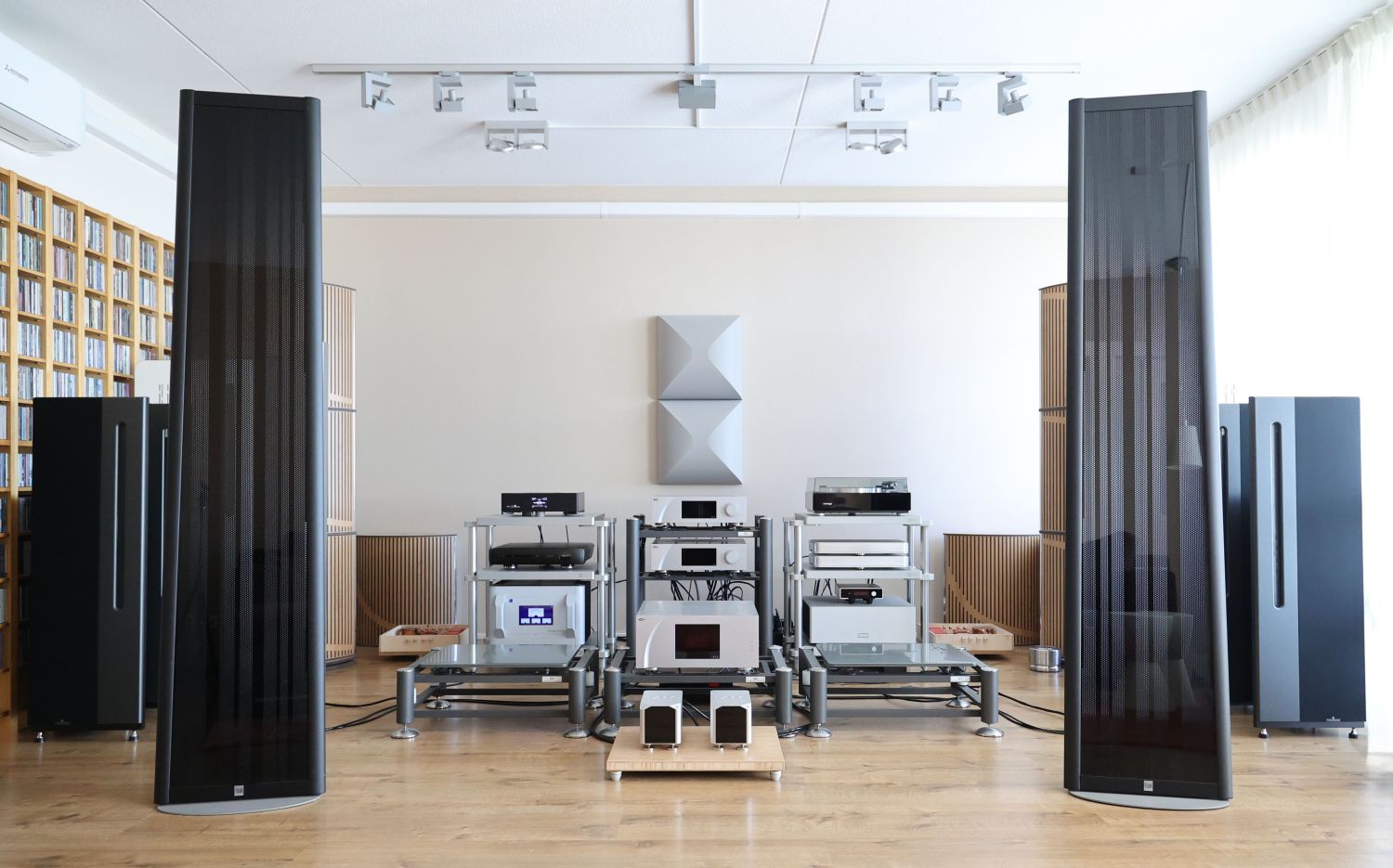
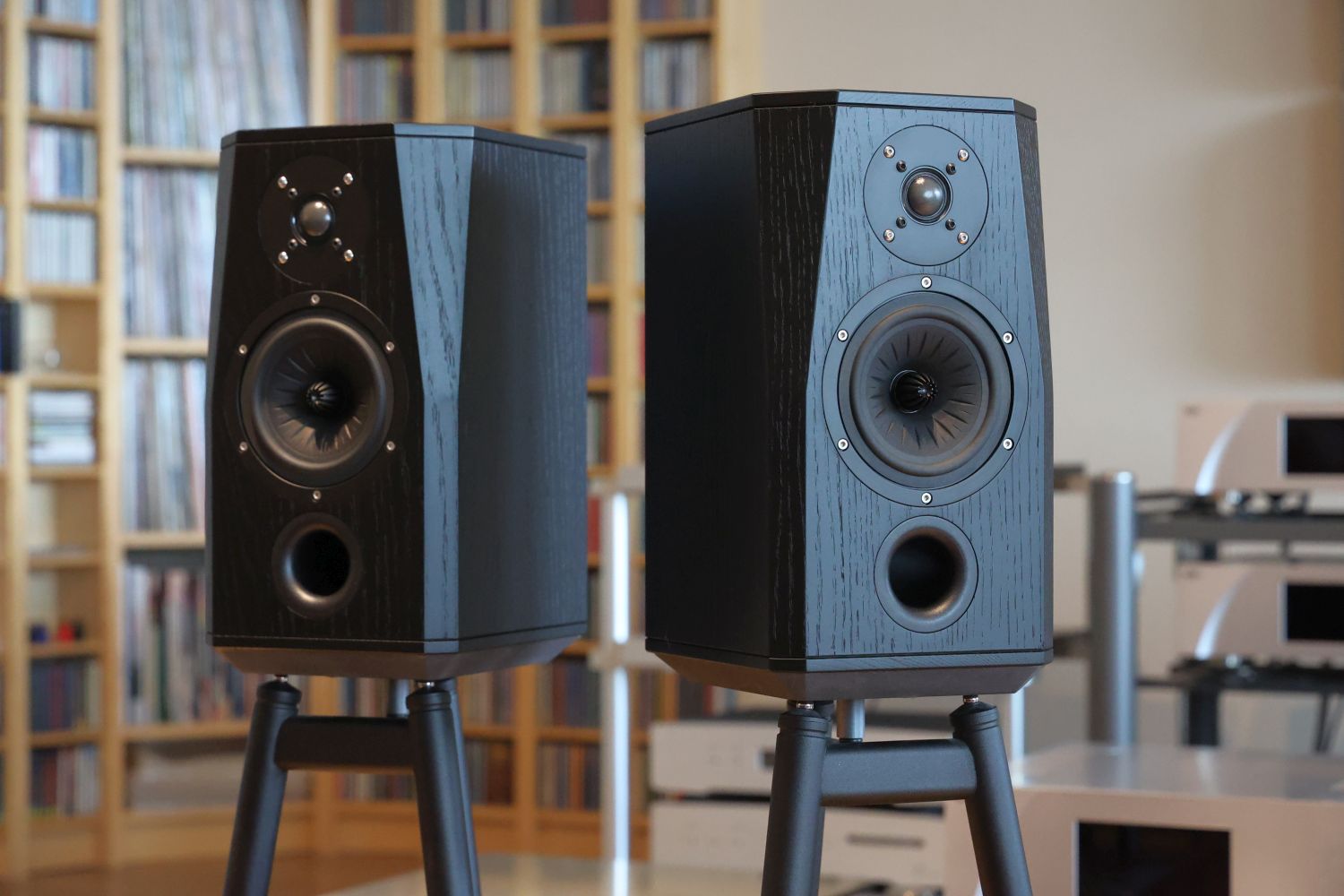
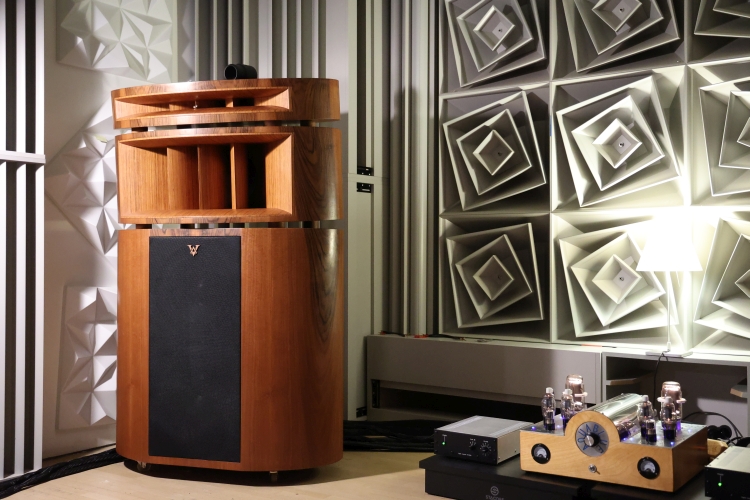
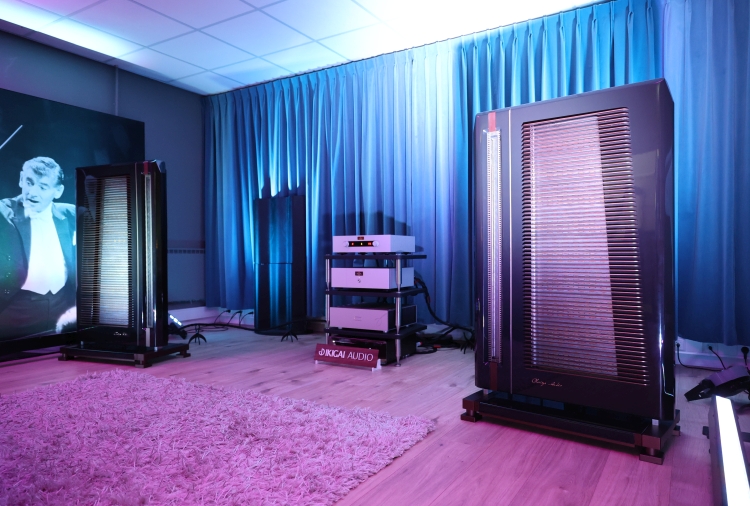
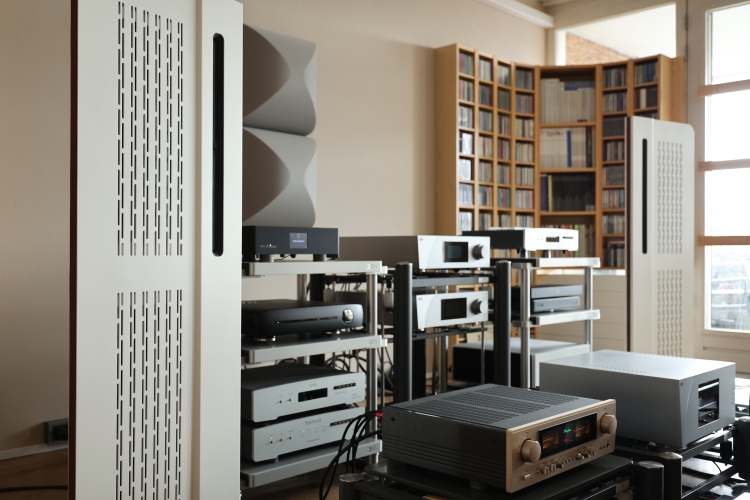
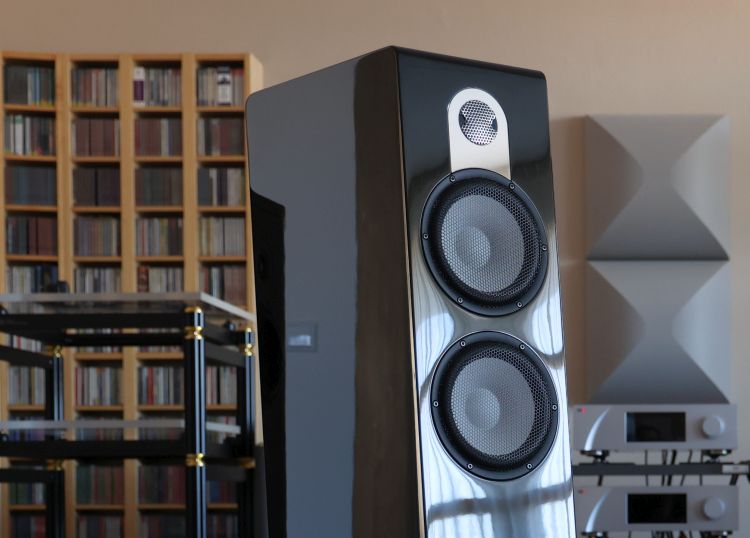
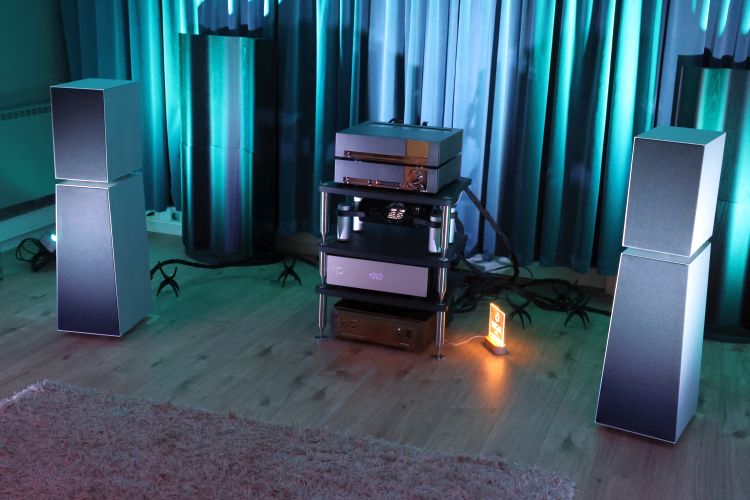
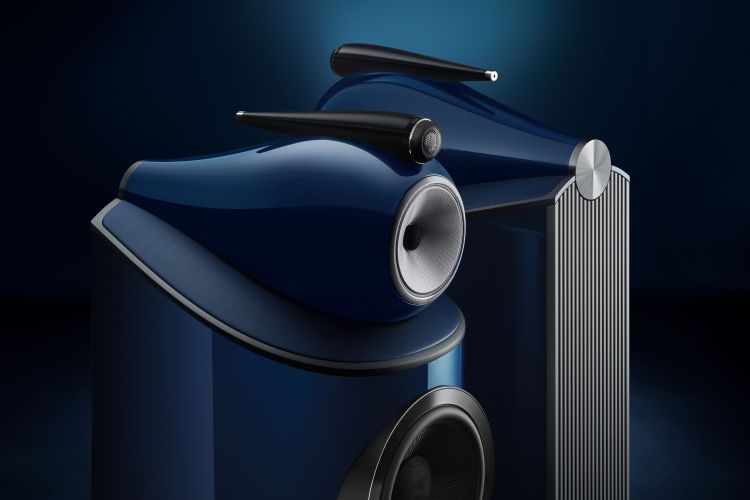
Hi Christiaan,
nice new speaker reviews!
Could you please put the Martin Logan Impression 11a review online again – I would love to read it again (it was only accessible via the large slider-pic while relatively new; not as an artilc below)!
Seems you are slowly changeing towards dynamic speakers … or where have the Divas and JR 6es gone? I still believe, that there is always (even when very slightly) coloration as soon as there is a “box” around the chassis …
Regards, Kai
Hi Kai, Woooops! You’re right – the review was “hidden”, I guess I just forgot to fully enable it. Anyway it is now visible again. Indeed the Divas and Rowland sixes are now gone and indeed I am investigating my options in the field of dynamic speakers. I now have Wilson WP8 and believe me or not but they really do not have a boxy sound at all. In fact, in terms of treble and midrange they are very very similar to the Duetta Sigs, not only tonally but also spatially. Quite remarkable. I will probably keep the Wilsons for the foreseeable future and am now trying to find the best partnering amp, and this will be a current production unit because I feel that I cannot keep reviewing with 10+ year old equipment. The Logans really were great too, I wish I could simultaneously set them up in another room.
Hi Christiaan,
Seeking your advice for “budgeted amplifier” for wilson sabrina. I was thinking on Kinki Studio EX M1..what do you think of that? Or any other suggestion within that price range.
As always, great review by the way 🙂
The Kinki is a very good option indeed. In any event, the Sabrina (the v1 at least, I have not yet heard the new model) benefits from an amplifier that is tight, linear and transparent. You could also look at Audio GD which I personally feel is more refined than the Kinki albeit perhaps not quite as dramatic or impactful. And given that the Sabrina is quite sweet and forgiving, the Kink’s slight rough edge may not be very noticeable. Alternatively, you could take the Hypex Ncore route. There are many amplifiers based on this technology and they tend to sound great.
Thanks so much for the advice, I hear you. Since u mentioned about Audio Gd, how about Audio-Gd tube preamp + 250 watt Master 3 balanced amplifier VS Kinki EX M1.
My listening genre mostly rock, classic rock but I also listened a lot to female singer and classical guitar. So between these 2 , what is your pick?
Thanks in advance
I’ve not heard any tube-based Audio GD products but I was told that they trade some of the transparency and transient sharpness for a rounder tube warmth. Personally, I feel that the Audio GD products do not need rounding but then I like my sound very linear and uncolored, your mileage may vary. Between Kinki and Audio GD it really comes down to your own taste. Also please note that the Kinki amp has slightly altered cosmetics and a different volume control compared to the one that I reviewed and so it may also sound different. Ultimately, I feel that Audio GD is more audiophile and it would be my pick, but even so, the Kinki’s particular strengths may still be preferred by other ears or in other combinations. I would simply advise trying them both if you can.
Well said Christiaan. Thanks a lot for the advice and input. 🙂
Hi Christiaan, I read this site regularly because your articles are interesting. I really like Sabrina speakers but my bedroom is quite small, about 14-15m2 with lots of furniture. Can you give me advice on fitting this speaker with such a small room? Thank you very much!
Hi Hop, I’m sorry but it’s really difficult for me to provide useful advice on the positioning without being in the room. In general, though, I can say that the Sabrinas like lots of space and to be well free from the side- and back walls and I don’t think they’ll work very well in such a small room. I would advise contemplating smaller speakers, maybe monitors. Of course, Wilson has the TuneTot but I haven’t heard it yet and am not sure if it really qualifies as a full-blown speaker. Perhaps the Duette could be really nice.
Thank you, Christiaan! The content of your message is very helpful to me.
Hello Christiaan. I have an opportunity to purchase a new set of the original Sabrina speakers, but am wondering about the adequacy/desirability of my current amp/pre amp for this pairing. My amp is an older McIntosh 2125 (125 watts/channel), and the pre amp a matching C28. I do love the sound of my current set up and have it tied to McIntosh XR5 speakers, as well as Definitive BP 20’s (Mc C28 has a speaker control relay allowing a choice of one or the others sets of speakers). My current pairing seems to work well– just wondering your thoughts on how the Sabrina’s would take to my older equipment. To get to “brass tacks”, my wife says why change to the Sabrina’s if I love what I have. My thought is it would be worthwhile if it stepped up the experience to another level. Its a long drive for my dealer to bring up for audition/sale, so I’d trying to discern things as best I can. Thank you for a great balanced review of the Sabrina’s.
Hi Bob, I haven’t heard the Definitive speakers but I’m sure they will sound very different from the Sabrinas, or any Wilson speaker, for that matter. The Sabrinas are my least favorite Wilsons because they sound quite warm and colored (for a Wilson) but that doesn’t mean that don’t have a target audience. Also, the current/new Sabrinas are much improved. Maybe they are for you, but given your equipment, I’m inclined to think the pairing won’t be ideal and you will need to make many more changes to get the balance right. In any event, certainly with speakers, I recommend trying before buying.
I’m very appreciative Christiaan of your advice of your comments on the Sabrina pairing that I had noted. You are certainly correct that an in home audition is absolutely necessary. You have helped me step back from making a premature purchase. I was perhaps trying to force a square peg into a round hole! Thank you again! Bob
Glad I could help, Bob! Do let me know what you find when you have listened to the current model Sabrina.
Christiaan,
I have restored Apogee Duetta Sigs with a Krell FBP-300 driving them. Are the Sabrina X even in the same league? I also have a 18×24 dedicated listening room.
The Sabrinas are entirely different speakers than the Apogees, you can’t really compare the two. It will depend on which aspects of sound you find most important, but overall, I feel that the Apogees are more neutral and transparent, Do note that I’ve only heard the original Sabrinas, not the current X iteration.
Thanks! Very insightful.
Hi Christiaan
May I ask what is the room size where you reviewed the Sabrinas and the WP8 and what do you think would be the “ideal” size for each speaker? Thanks!
Pls see the HFS Setup Snapshots for the room info: https://www.hifi-advice.com/blog/hfa-audio-setup-snapshots/main-system-11-december-2023/
The room is 7 meters deep, and at the system end, it is 5m wide. As the picture illustrates, there are cavities on either side. I have no idea what room size is strictly ideal for these speakers although Wilsons do like space. In any case, I don’t think my room would be too small for either speaker.
Thanks for your answer Christiaan, that is a beautiful room! My question about the ideal room size was just in case you thought that the Sabrinas were too small for your room not because your room was too small for either of the speakers.
Hi Toni, ah, I see. Well, given that the “tiny” Magico S1 MkII’s drive my room very well, I don’t think the Sabrinas would be too small for the room.